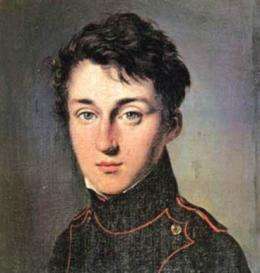Explained: The Carnot Limit

Anytime engineers try to design a new kind of heat-based engine or improve on an existing design, they bump up against a fundamental efficiency limit: the Carnot Limit.
The Carnot Limit “sets an absolute limit on the efficiency with which heat energy can be turned into useful work,” says MIT’s Jane and Otto Morningstar Professor of Physics Robert Jaffe, who co-teaches a course on the physics of energy. If engineers are faced with redesigning an engine that is 35 percent efficient, it makes a big difference whether the maximum possible efficiency of such an engine is 50 percent — in which case it may not be feasible to try to push it further — or 80 percent, in which case there is a significant margin for improvement.
Nicolas Léonard Sadi Carnot, who was born in France in 1796 and lived for only 36 years, deduced this limit. His insights into the nature of heat, and the limitations on machines that use heat, had an impact that lasts to this day. What makes his accomplishments all the more remarkable is the fact that the nature of heat itself was not understood until long after Carnot’s death. At the time of his research, scientists still subscribed to the later-discredited “caloric” theory of heat, which held that an invisible fluid of that name carried heat from one object to another.
Carnot’s 1824 book “Reflections on the Motive Power of Fire” laid out a set of principles that, in some cases, are still widely used. One of those is the Carnot Limit (also known as Carnot efficiency), which is given by a simple equation: the difference in temperature between the hot working fluid — such as the steam in a power plant — and its cooled-off temperature as it leaves the engine, divided by the temperature in degrees Kelvin (that is, degrees above absolute zero) of the hot fluid. This theoretical efficiency is expressed as a percentage, which can be approached but never actually reached.
At the time of Carnot’s work, the best steam engines in the world had an overall efficiency of only about 3 percent. Today, conventional steam engines can reach efficiencies of 25 percent, and gas-fired turbine steam generators in power plants can reach 40 percent or more — compared to a Carnot Limit, depending on the exact heat differences in such plants, of about 51 percent. Today’s car engines have efficiencies of 20 percent or less, compared to their Carnot Limit of 37 percent.
Since the limit on efficiency is based on the temperature difference between the heat source and whatever is used to cool the system — usually outside air or a supply of water — it is clear that the hotter the heat source, the higher the possible efficiency. So, for example, Jaffe explains, “a fourth-generation nuclear reactor that heats steam to 1200 degrees Celsius uses a given amount of energy far more efficiently than a geothermal energy source that employs steam at 120 degrees Celsius.”
Provided by Massachusetts Institute of Technology
















